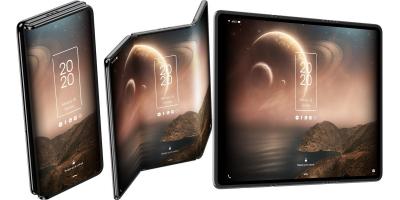Foldable OLED display have been introduced in 2019, and today we have several premium smartphones that feature such interesting new displays. Most analysts agree that the foldable OLED market will grow at a very fast rate in the future.
Rollable OLED displays, however, are yet to enter the market. Display makers have been showing rollable display prototypes for many years, but commercial products aren't here yet. LG Display will hopefully start shipping the rollable 65RX OLED TV soon, and the company also says it will ship a rollable OLED smartphone in 2021.
So foldable OLEDs have been realized before rollable ones, but it is interesting to learn why are rollable OLEDs more challenging to produce compared to foldable ones. After all the folding radius of foldable displays can be smaller than that of a foldable one. If you take a piece of paper and fold it, the damage to the paper is more severe than the damage you inflict when you roll it.
There are several reasons why rollable OLEDs are so challenging to commercialize. One such issue is the accumulation of slippage. The more you roll a display, the more tension there is inside the different layers of the OLED. This shear force can lead to layers peeling way and other undesirable problems. An OLED is different than a piece of paper because it is made from many layers.
Another problem with rollable displays is that the tension you inflict is present on the entire OLED display, and combined with fast rolling speeds this can lead to very high and unpredictable stress on the display.
When designing a foldable display, the display maker knows in advance where the folding will take place, and so can adopt an architecture to minimize the fold stress at that specific line. For example in the original Galaxy Fold, Samsung laminated metal plates on the inner side of the display, on both sides, expect for the central fold region. This helped the durability of the display when being folded and unfolded. In addition the designers can choose the display materials and layers so to mitigate the stress during folding along the same line.

Foldable OLED smartphone prototype
Finally, another challenge with rollable displays is the electronics interface - a rollable display can only be connected from two sides of the display as the other two sides can be rolled and so are not fixed.
Even though these are very complex engineering problems, rollable OLEDs are being developed and the technology is advancing - and we hope that indeed in 2021 we'll already see several such products on the market. The potential design freedom that rollable OLEDs offer is exciting device makers and consumers. This will require, however, massive efforts by OLED makers to choose the right materials and designs as to support the stress of the rolling action over many rolling cycles.

